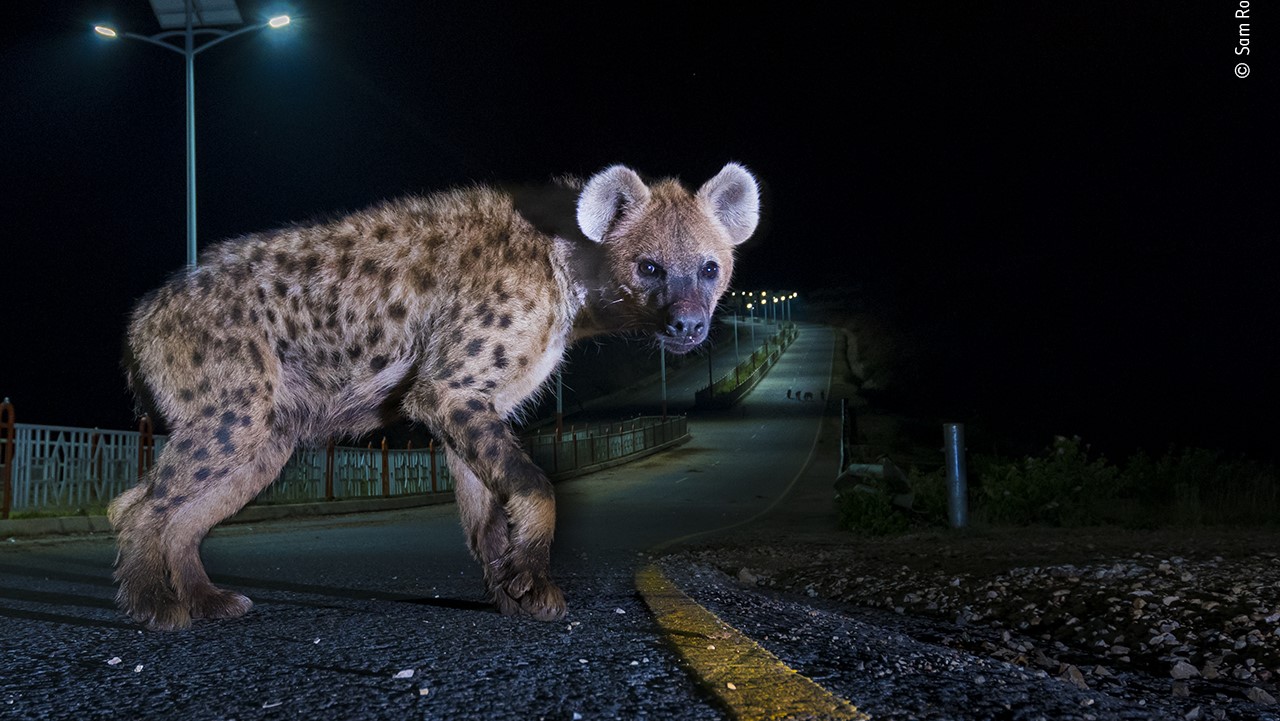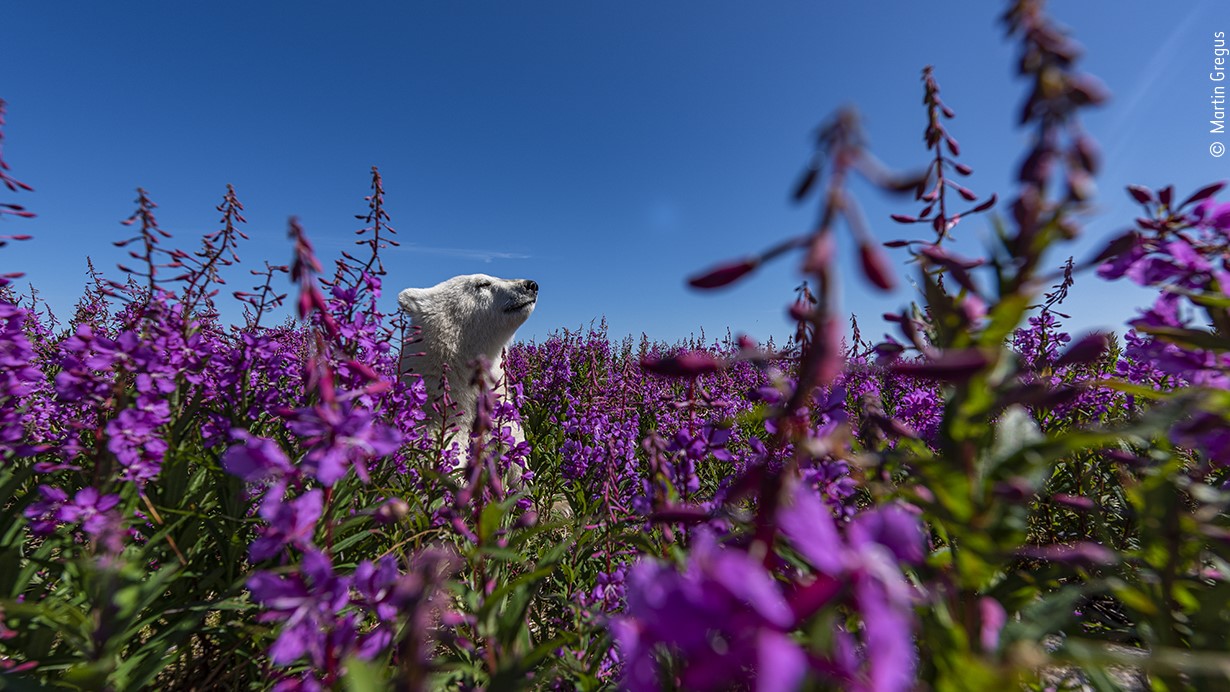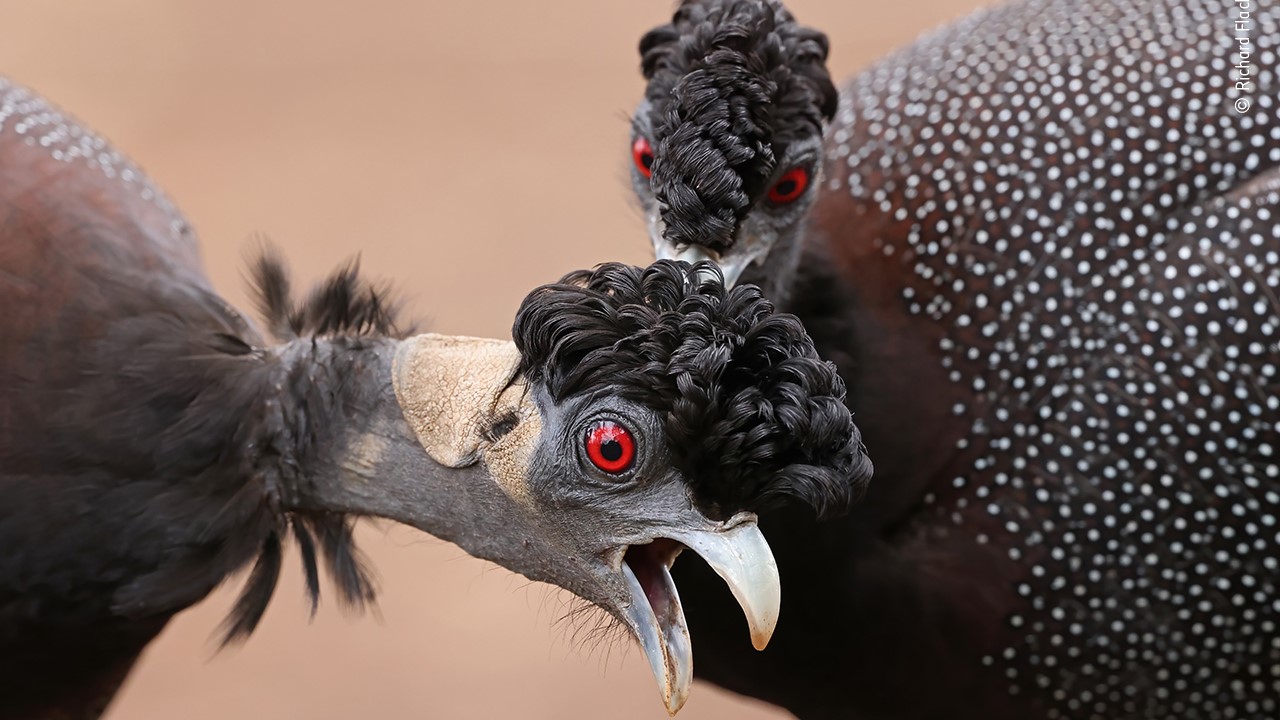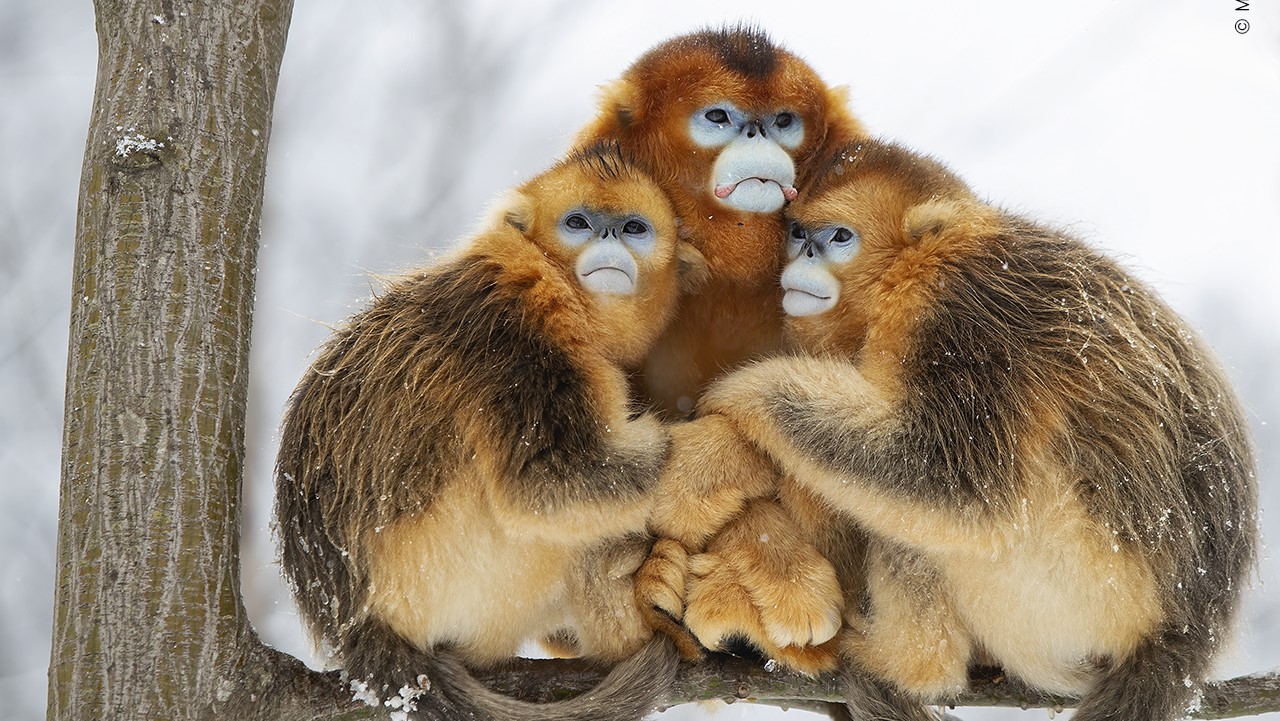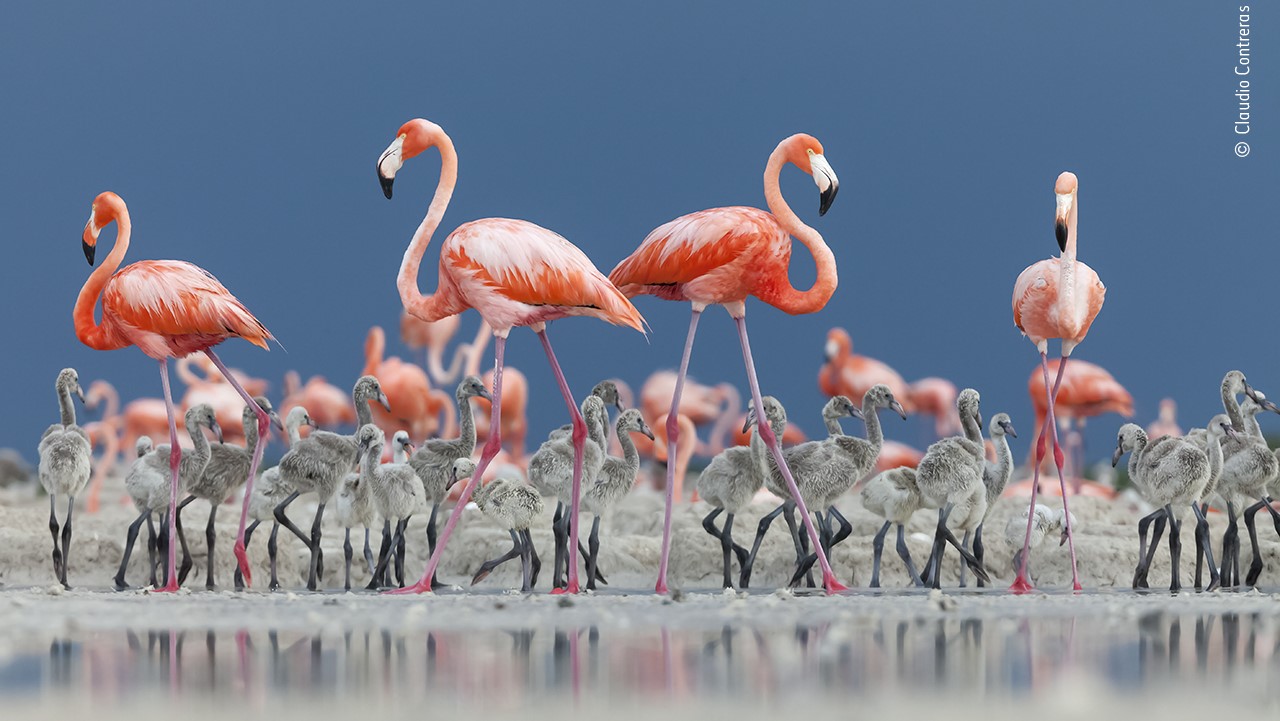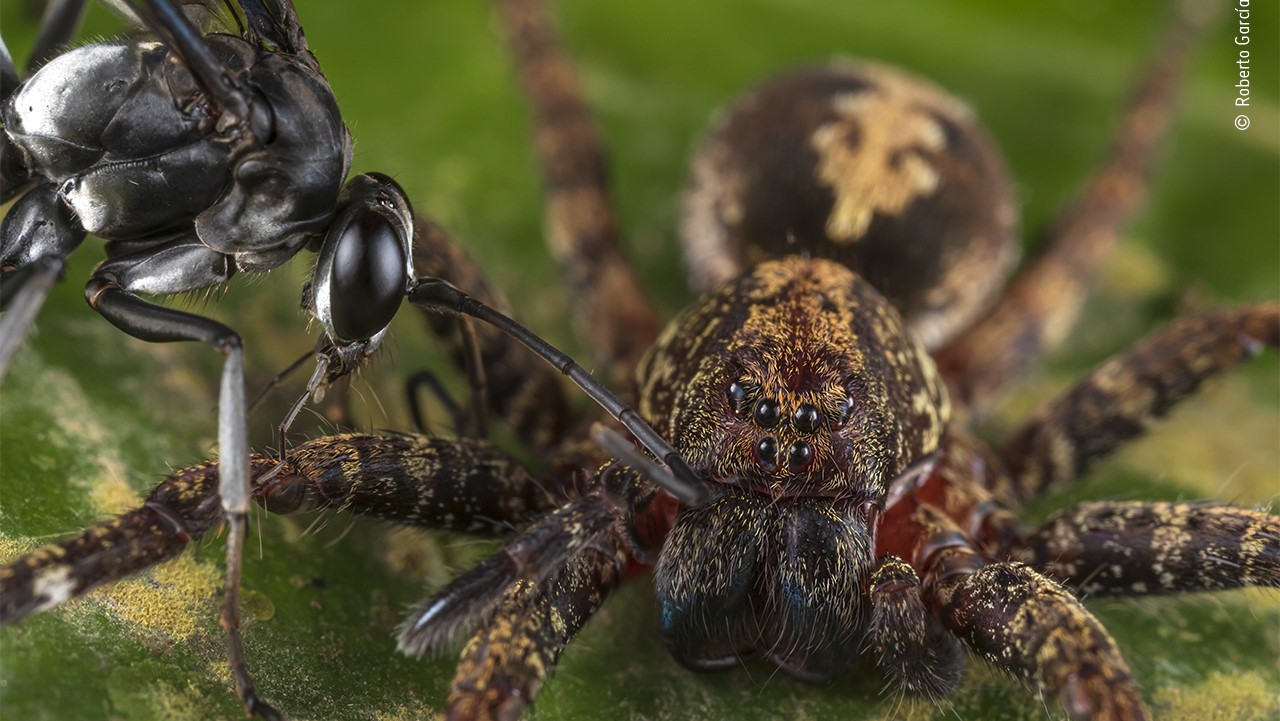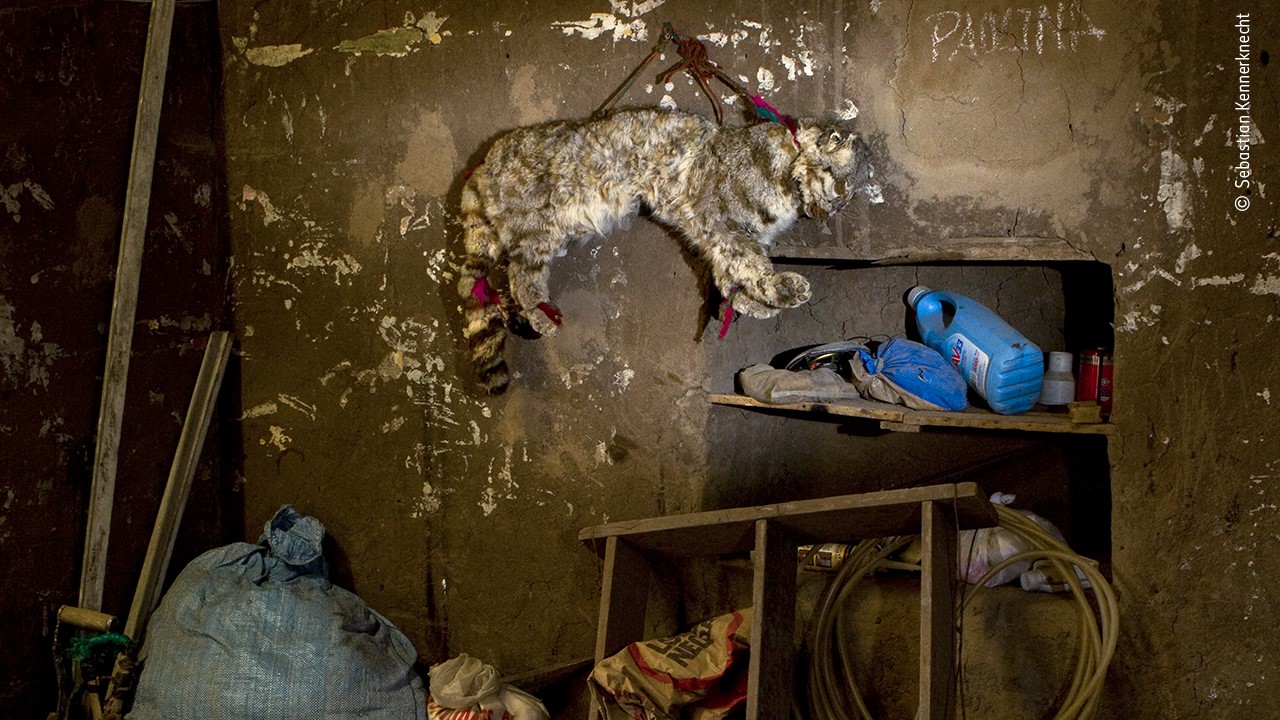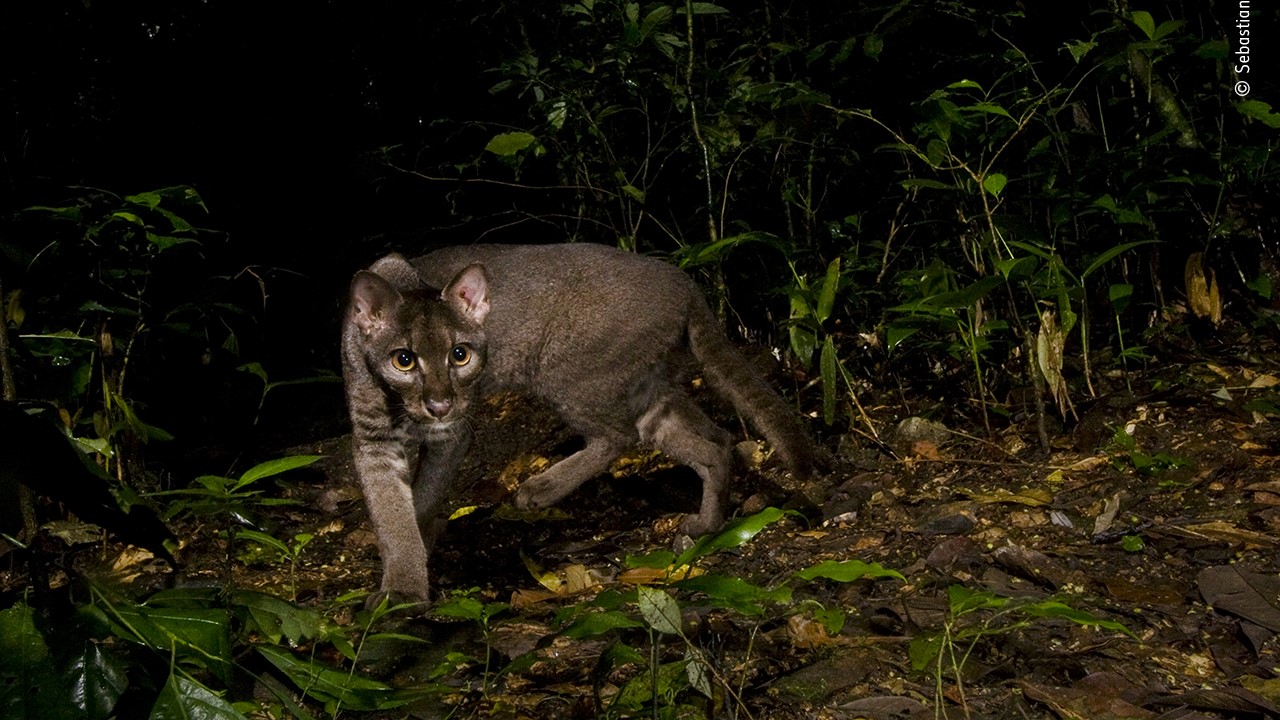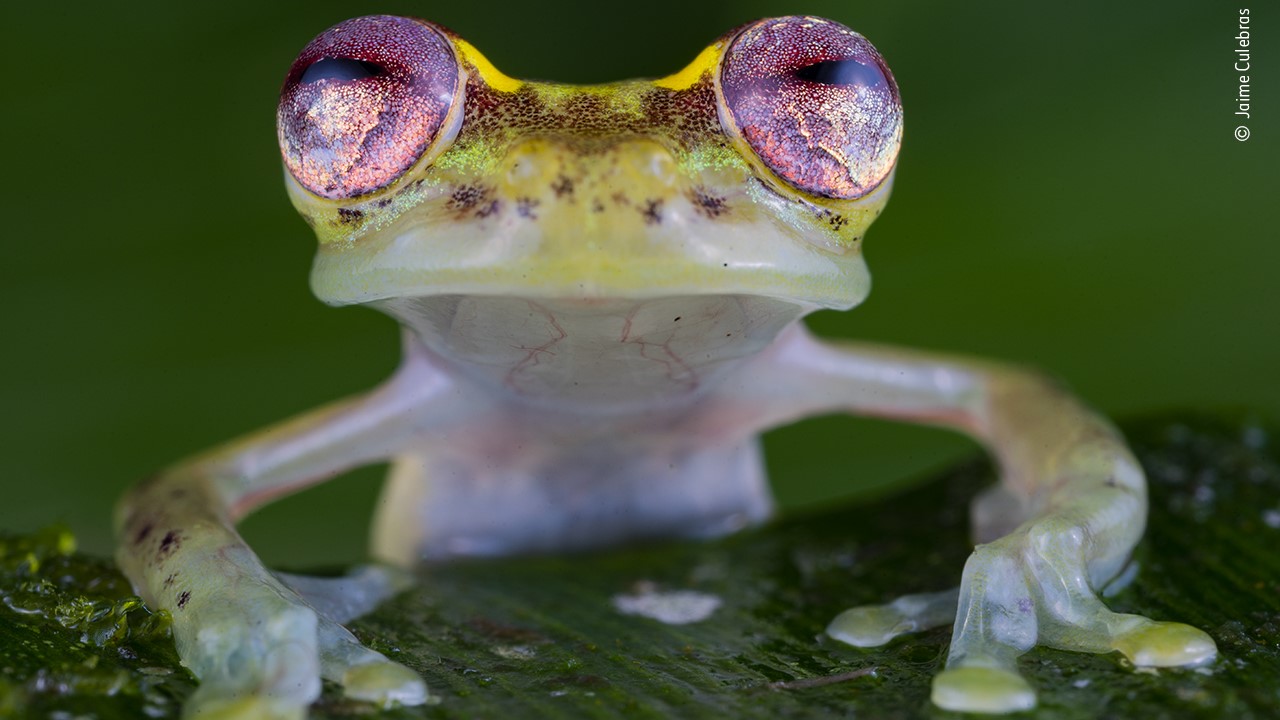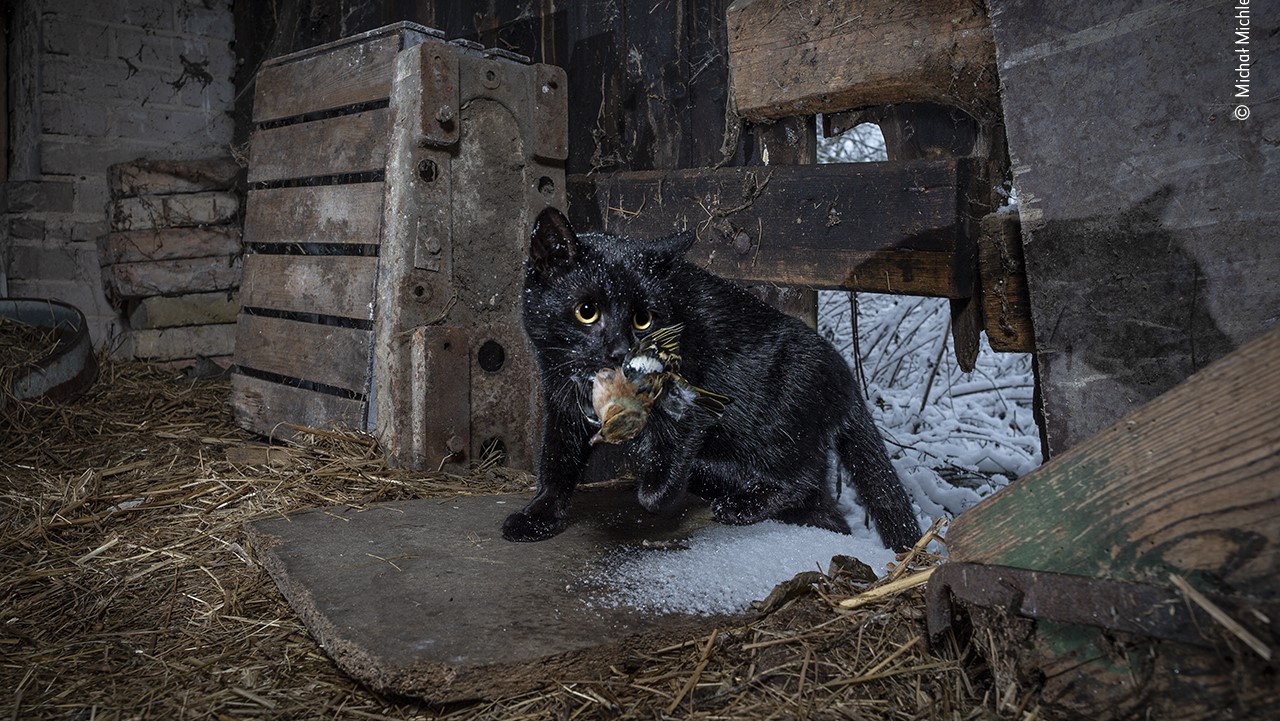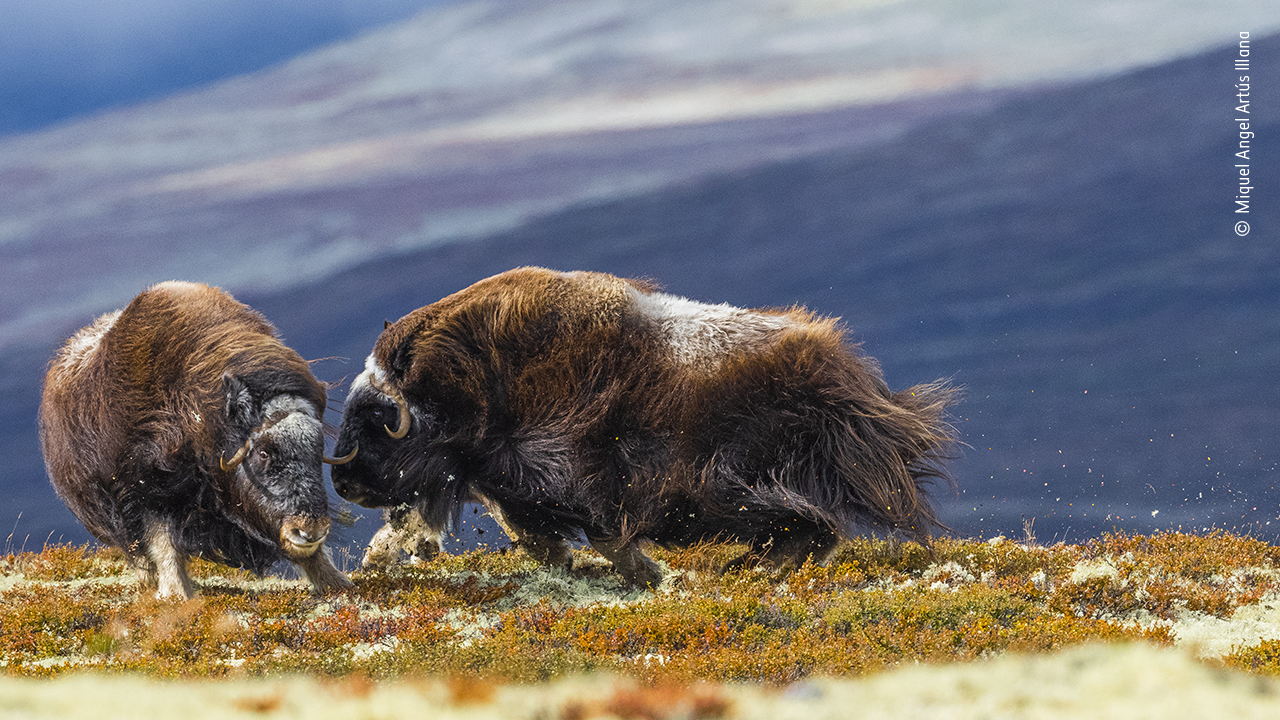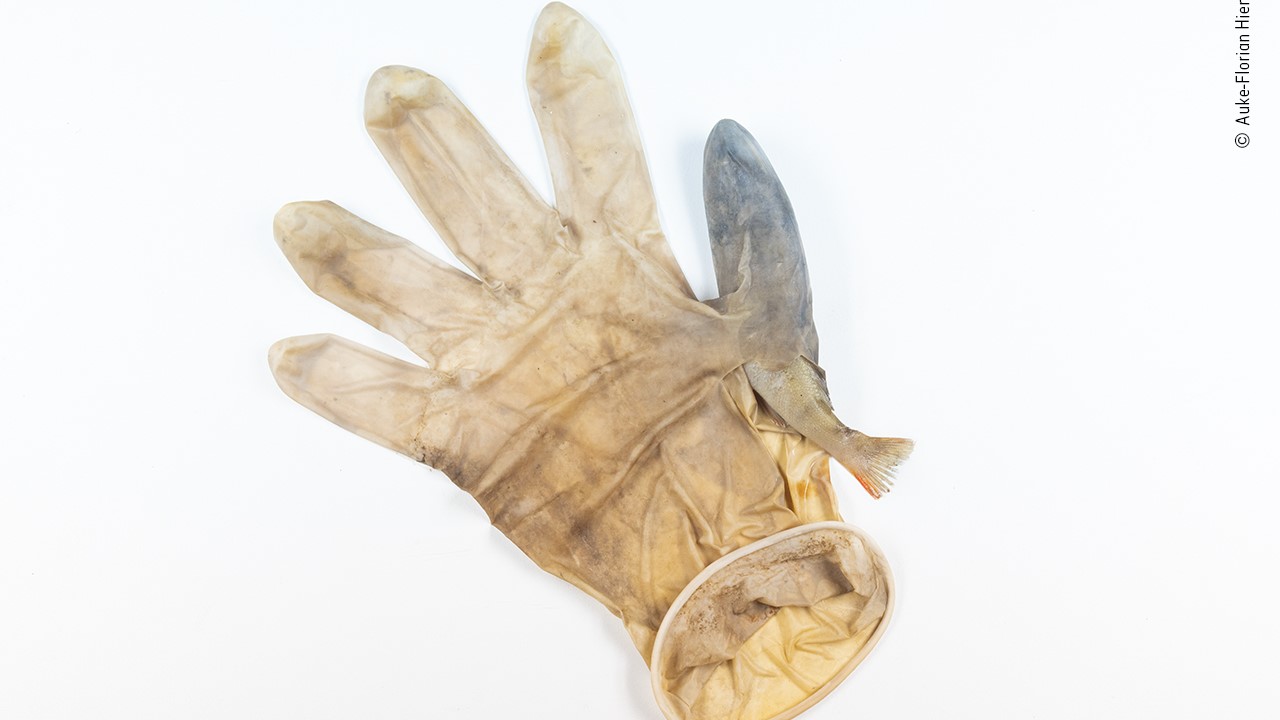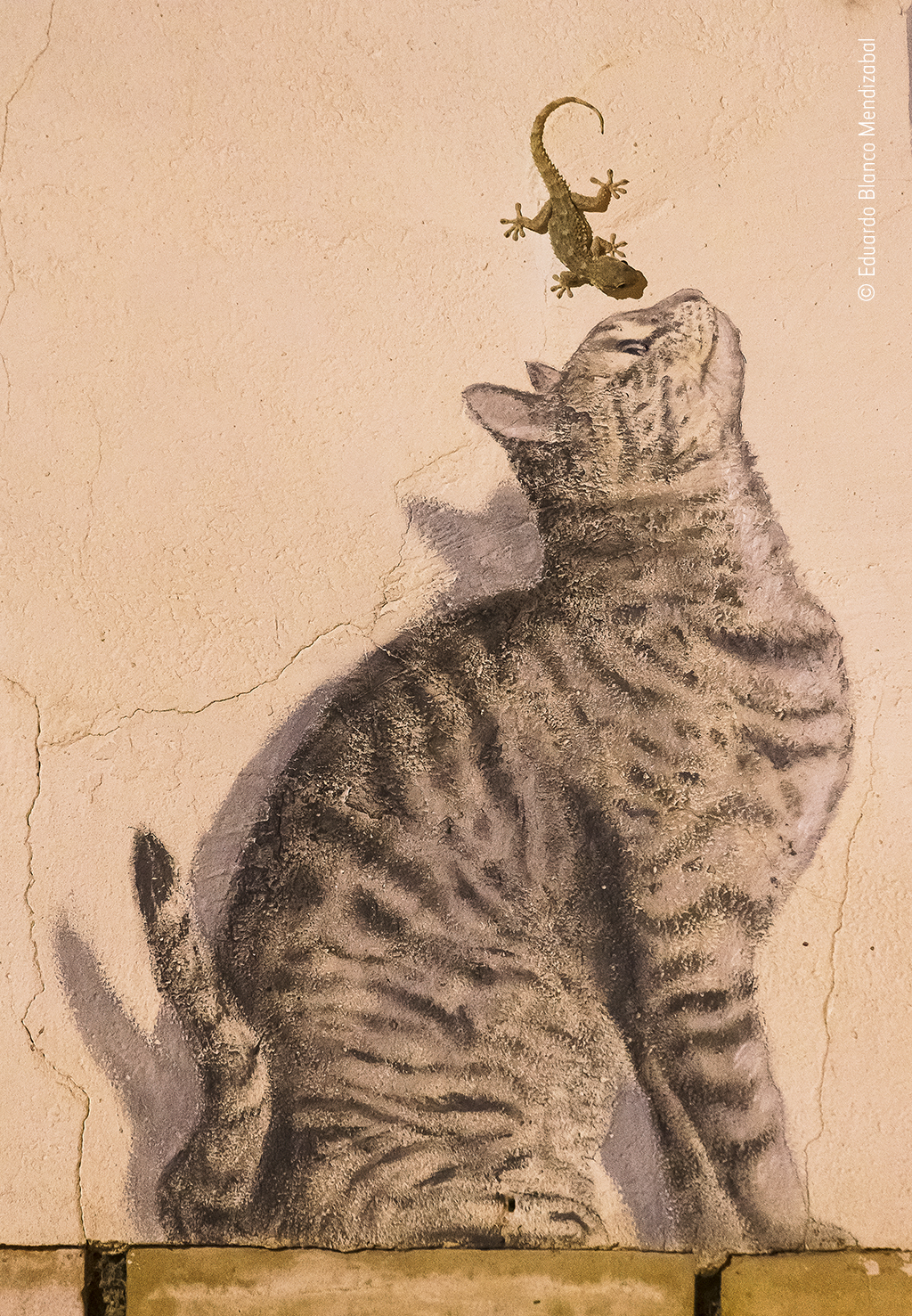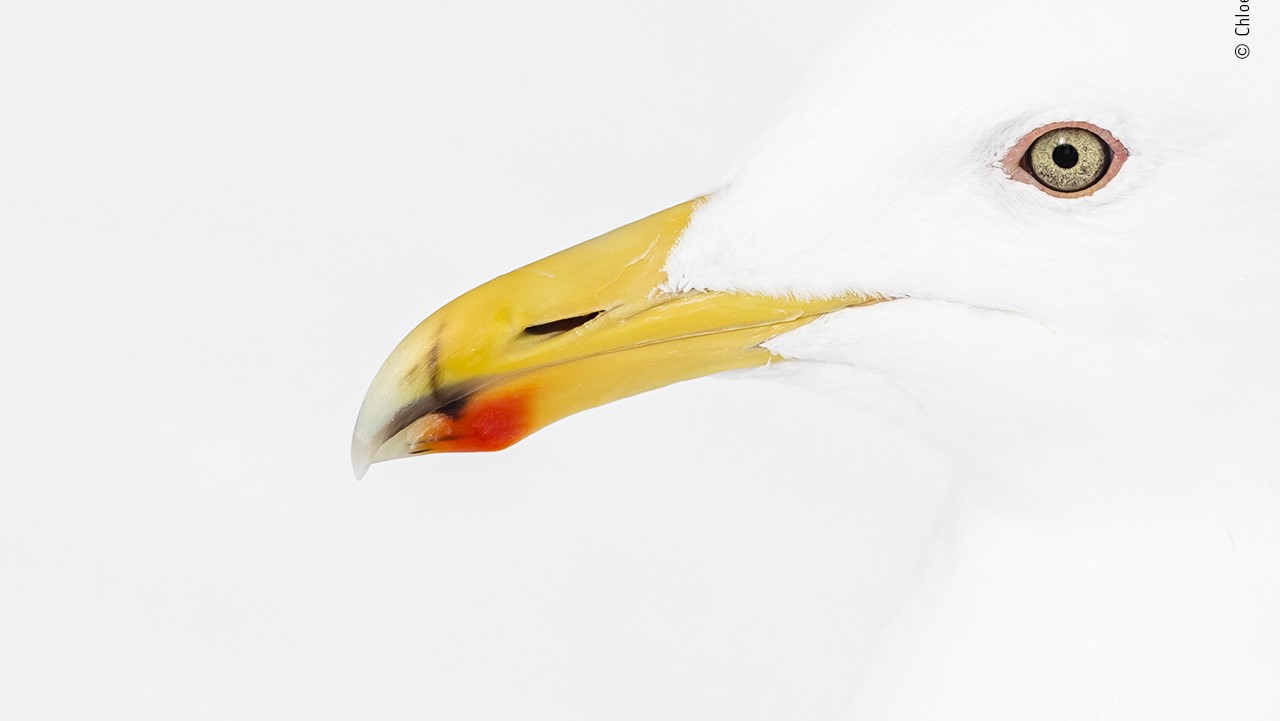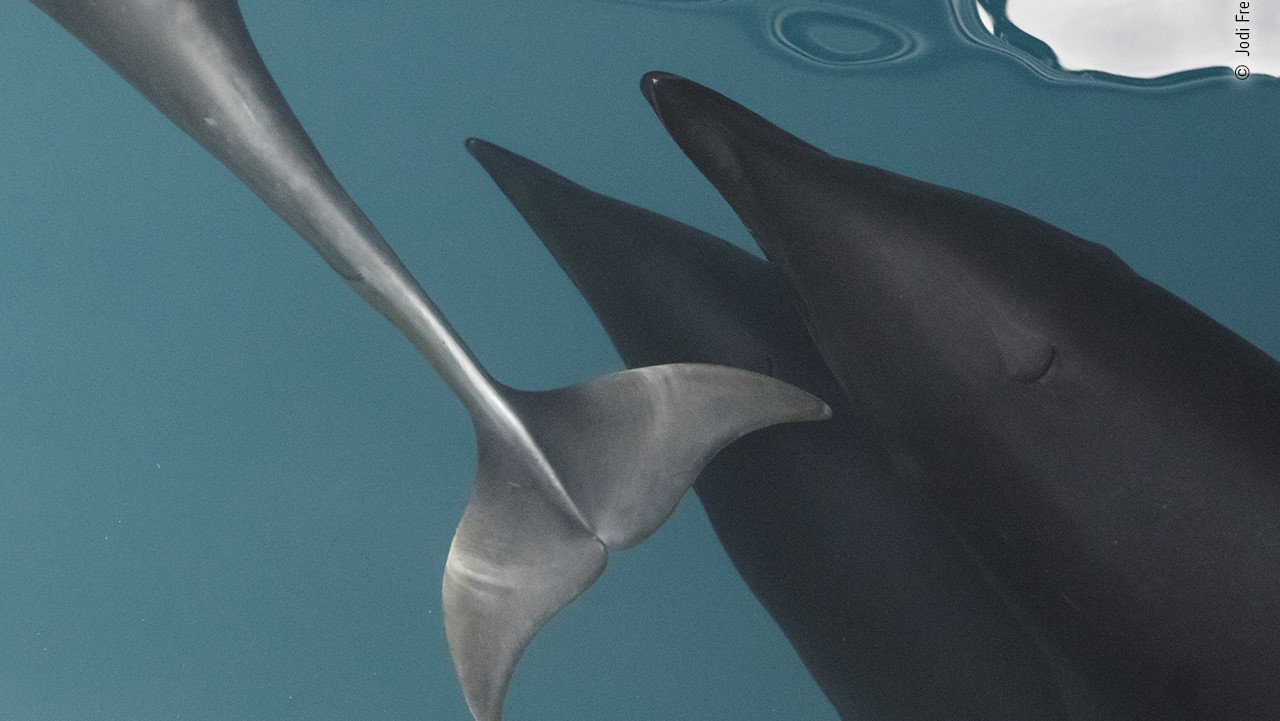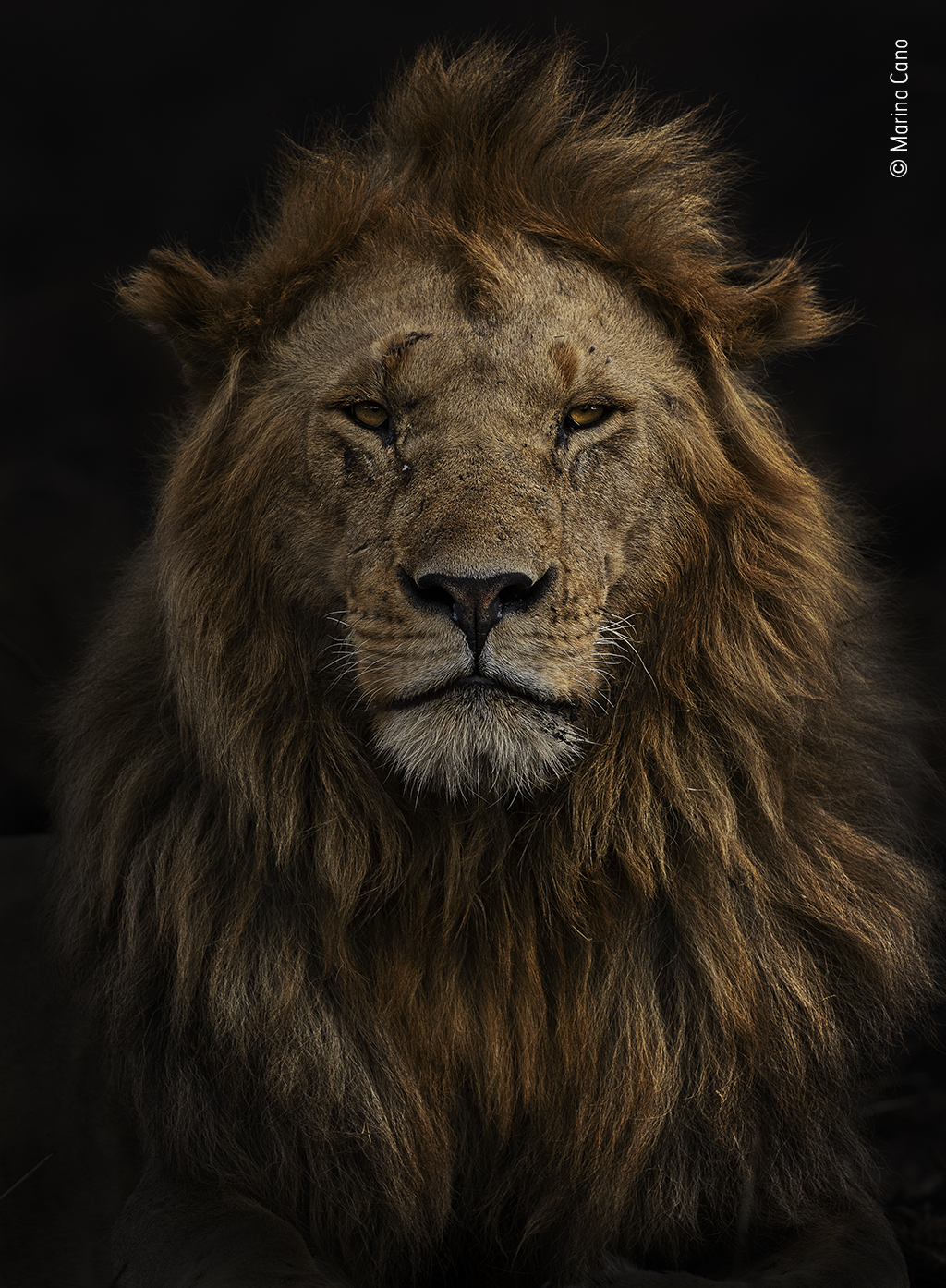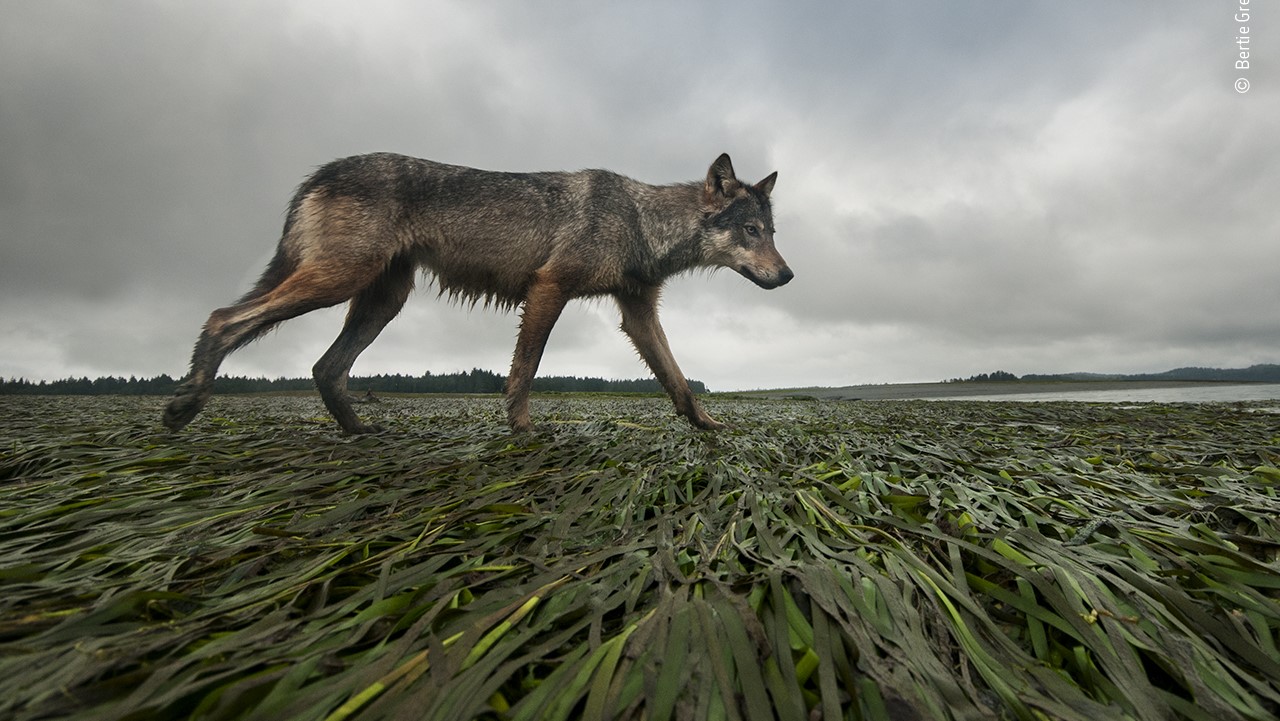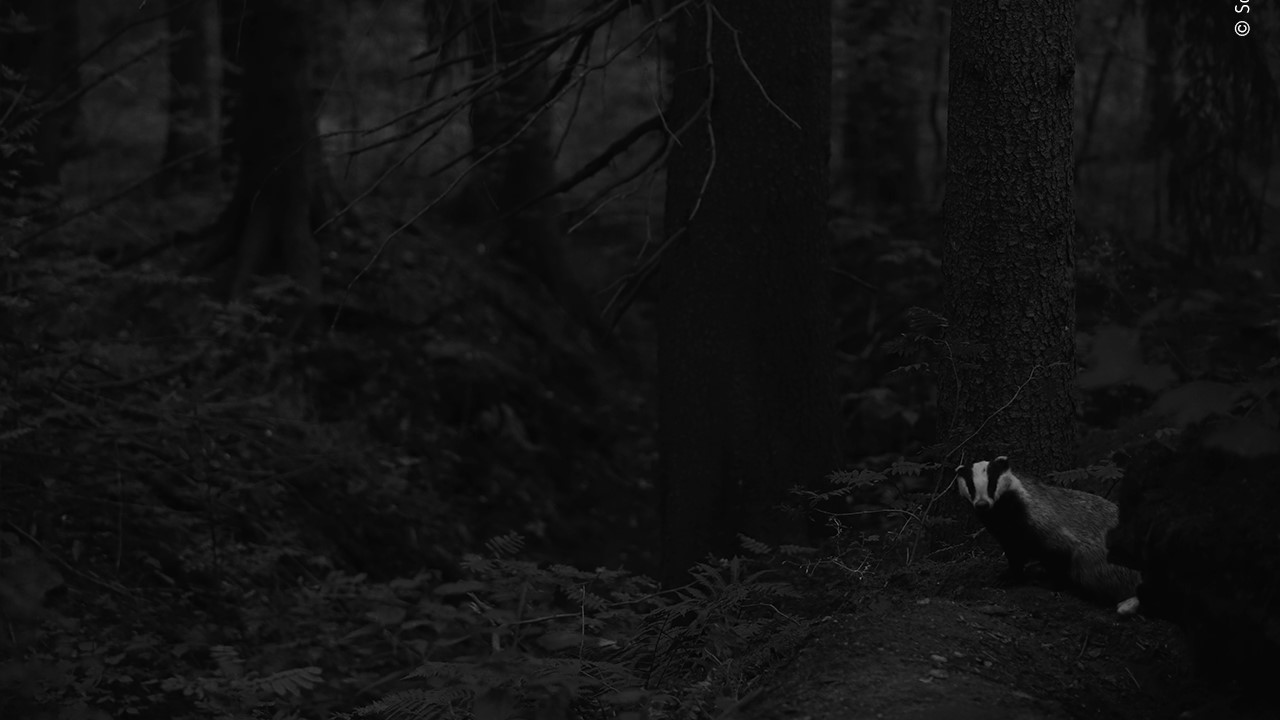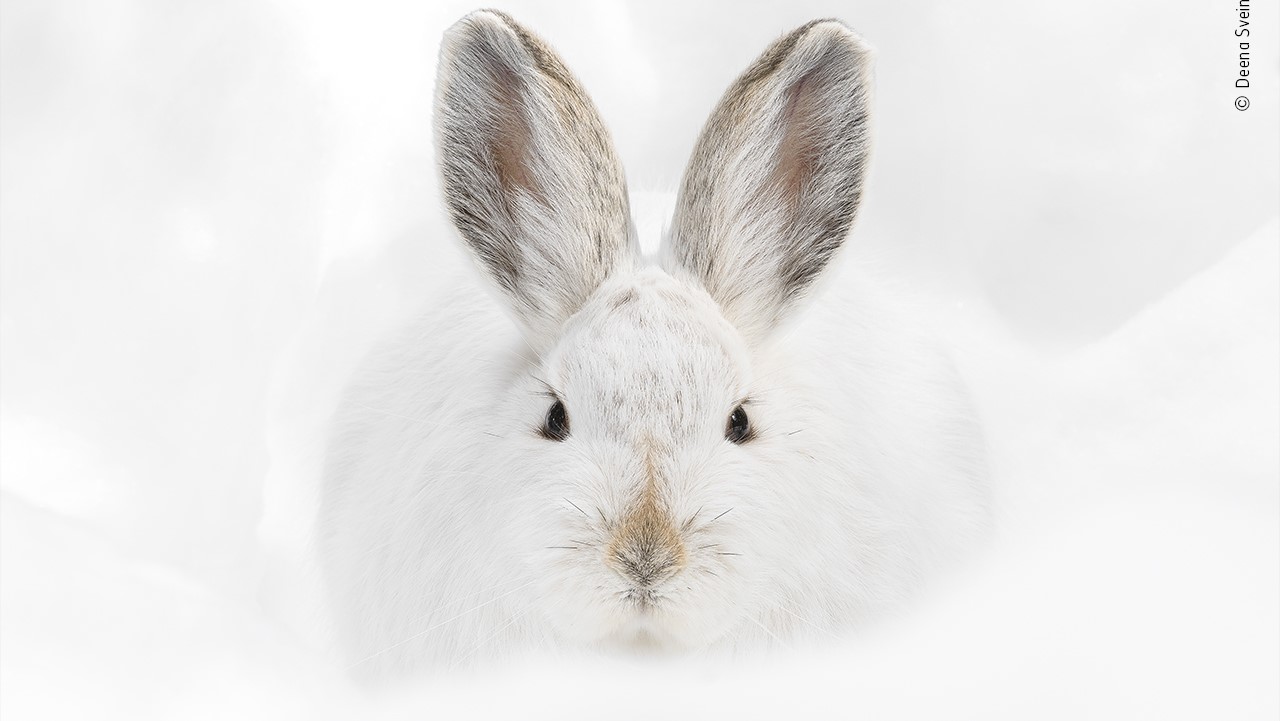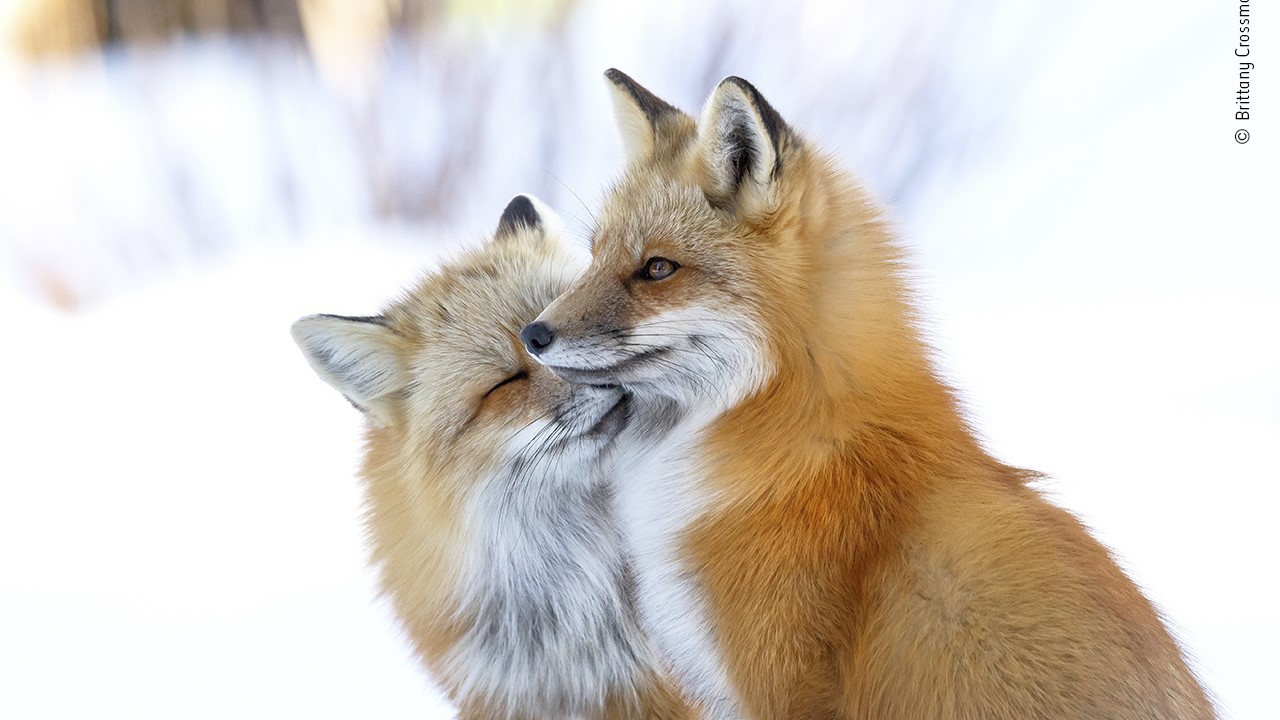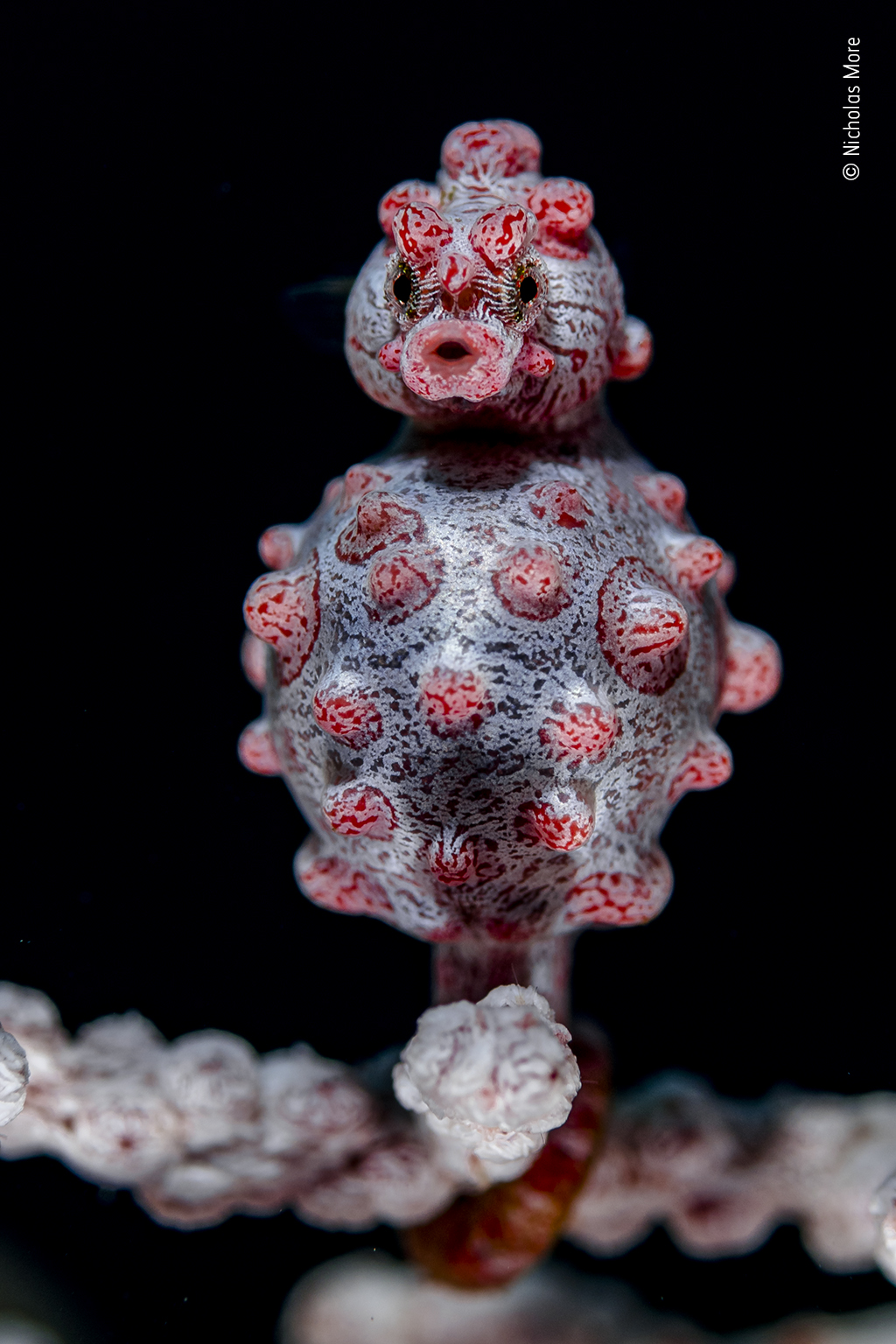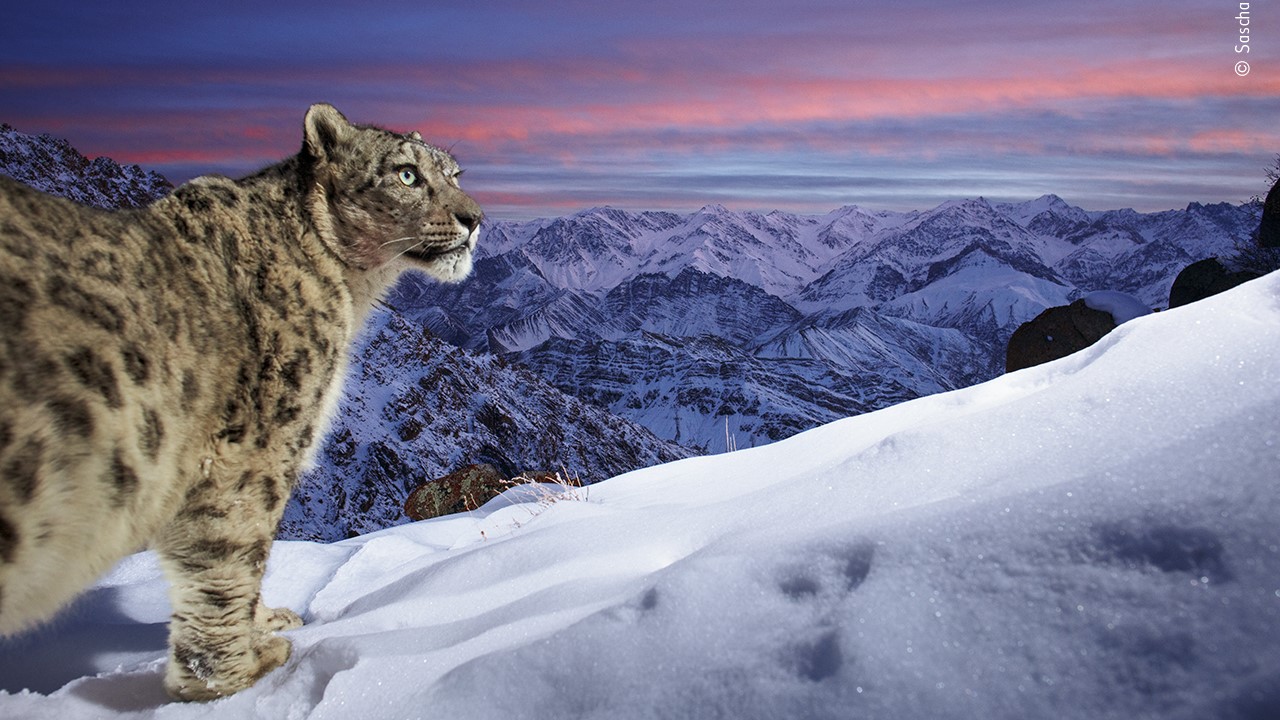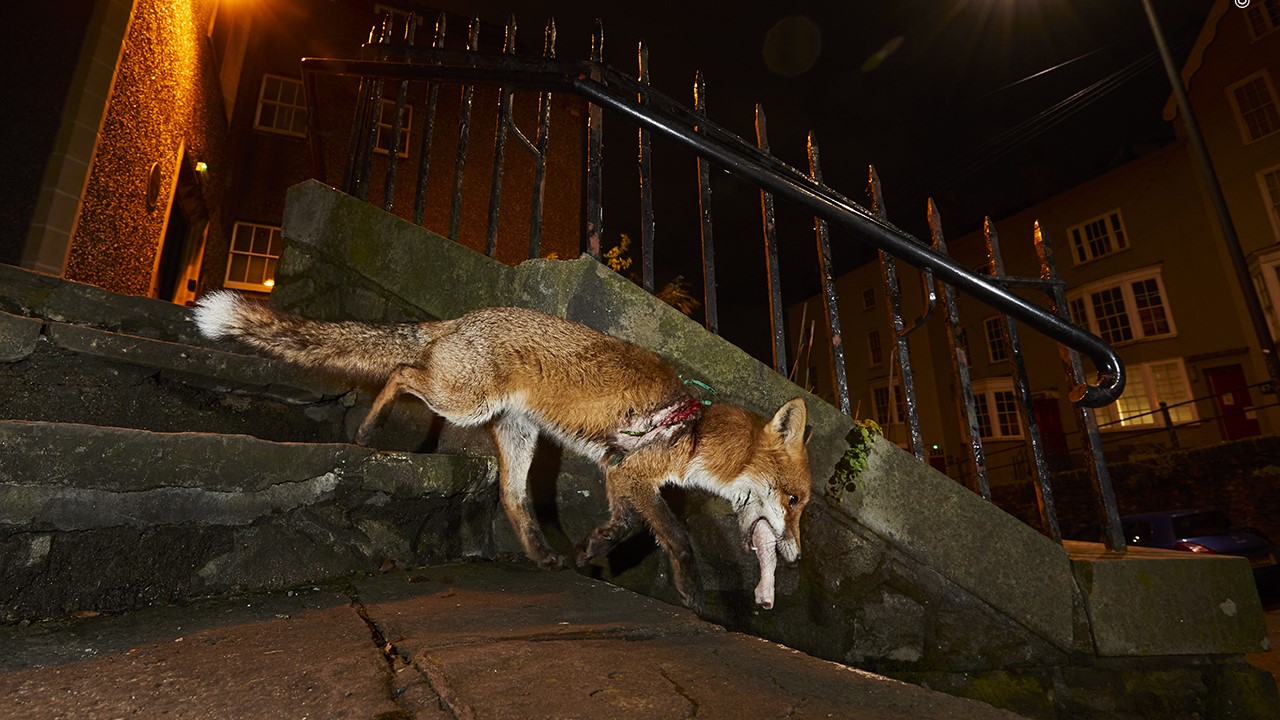Heartbreaking photo reveals a baby baboon still clinging to its dead mother as she's carried away by a leopard
The annual Wildlife Photographer of the Year Competition People's Choice shortlist highlights animals from ecosystems across Earth.
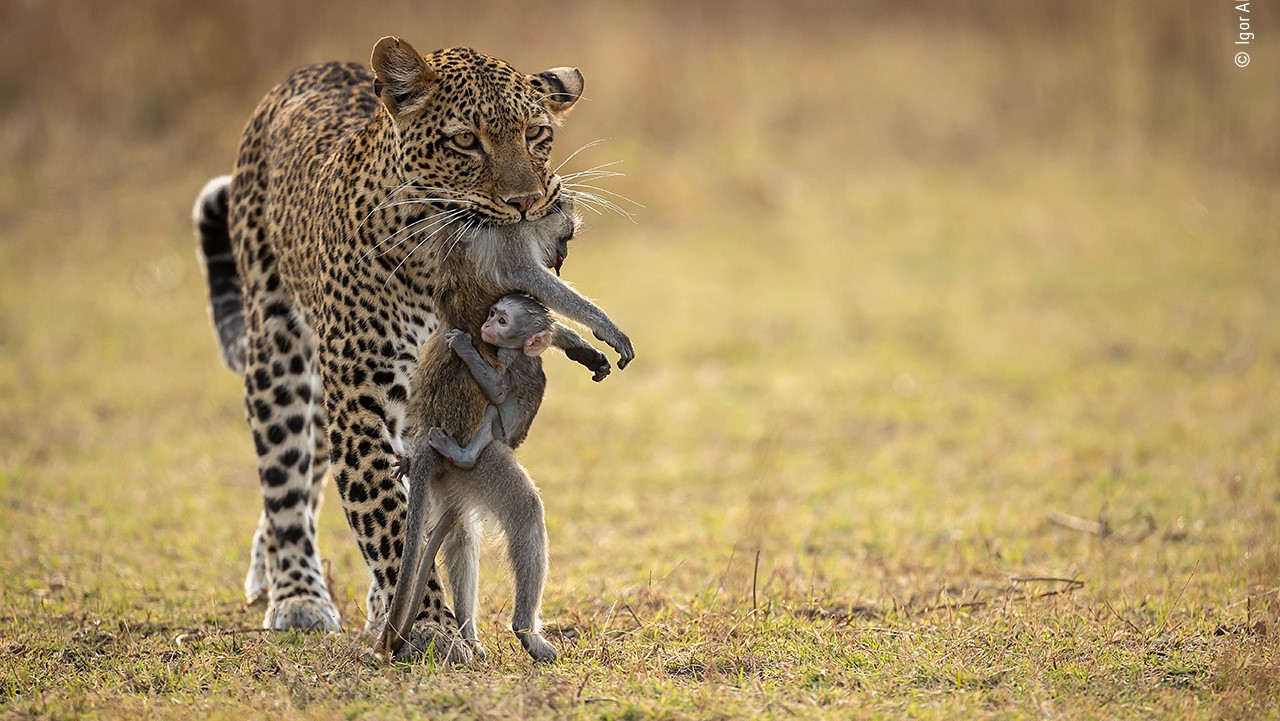
From affectionate foxes to ruby-eyed frogs and flamboyant flamingos, the shortlist of photographs selected for the Wildlife Photographer of the Year People's Choice Award display the natural world in all of its awesomeness.
Run by the Natural History Museum, London, the People's Choice Award is open to voters worldwide, who can choose their favorite image at the contest website until Feb. 2, 2023. The winner will be showcased at the museum until the photography exhibit closes in July 2023.
Highway hyena
A spotted hyena (Crocuta crocuta) pauses in the flash of a remote camera. U.K. photographer Sam Rowley captured this photo outside the city of Harar, Ethiopia, where hyenas eat refuse left by humans, including rotting meat and bones. This hyena is the lowest-ranking member of a local group known as the Highway Clan.
Among the flowers
Canadian photographer Martin Gregus caught this bucolic image near Hudson Bay, where this polar bear (Ursus maritimus) cub was gamboling amid a patch of fireweed. Gregus used a remote camera placed at ground level to mimic a young bear's-eye-view of the scene.
That’s the spot
South African photographer Richard Flack captured this slice of guinea fowl life in Kruger National Park. As he watched a flock of crested guinea fowl (Guttera pucherani), one began to scratch the other's ear. The recipient of these attentions stood motionless with its mouth open, as if to say, "that's the spot!"
"It's not often you get to capture emotion in the faces of birds . . . but there was no doubt — that was one satisfied guineafowl!" Flack said in a statement accompanying the image.
Fishing for glass eels
Eladio Fernandez of the Dominican Republic captured this otherworldly image over the course of several nights in order to highlight the plight of European eels (Anguilla anguilla). These eels migrate from coastal Europe to the Sargasso Sea in the North Atlantic to spawn, and their young — known as glass eels for their transparent appearance — are fished as a delicacy. However, the eels are critically endangered, making this unregulated fishery problematic for the species' future survival.
Get the world’s most fascinating discoveries delivered straight to your inbox.
A golden huddle
China's Minqiang Lu took this photograph in the Qinling Mountains in Shaanxi province, the last place on Earth where endangered golden snub-nosed monkeys (Rhinopithecus roxellana) live in the wild. Lu hiked for over an hour in 14 degrees Fahrenheit (minus 10 degrees Celsius) to capture this shot of two females and a male snuggling together for warmth.
Caribbean crèche
Pink flamingos are silhouetted against a sapphire sky in this shot taken at Ría Lagartos Biosphere Reserve, on the Yucatán Peninsula, Mexico. Photographer Claudio Contreras Koob, from Mexico, stayed a distance from this flamingo nursery, where babies are always guarded by alert adults.
Wasp attack
Roberto García-Roa of Spain focused his lens on the very small in this image of a pompilid wasp and Ctenus spider doing battle. Pompilid wasps sting spiders, paralyzing them and dragging them back to their nests to feed their young. In this image taken in Peru, the wasp has just won the battle and is preparing to drag the paralyzed spider away.
Unlucky for the cat
Sebastian Kennerknecht, from the U.S., took this picture of an Andean mountain cat (Leopardus jacobita), stuffed and hanging in a shed, in Abra Granada, Argentina. The endangered cat is respected in the region as a guardian of the mountains, but its body is also considered a charm for the fertility of livestock, so the cats are sometimes hunted and killed.
The elusive golden cat
Kennerknecht had better luck with wildcats in Uganda, where he captured this image of one of the rarest cats on Earth, an African golden cat (Caracal aurata). There are very few high-resolution images of African golden cats in the wild; Kennerknecht captured this shot through sheer persistence. After fleeing the area to avoid a charging forest elephant, he and a biologist friend returned to set up a camera trap. The effort paid off.
The frog with the ruby-eyes
What ruby eyes you have! Spanish photographer Jaime Culebras captured this image of a female Mindo glass frog (Nymphargus balionotus) in the Río Manduriacu Reserve in the foothills of the Ecuadorian Andes. The frog sat calmly as Culebras set up his equipment to the soundtrack of male glass frog calls.
Caught by the cat
Using a trail cam, Polish photographer Michał Michlewicz tracked a steady stream of activity into this abandoned barn in the village of Radolinek, Poland: a badger, a martin, a fox and lots of cats. This domestic cat had caught and killed a chaffinch.
Head to head
Spanish photographer Miquel Angel Artús Illana had been following five musk oxen (Ovibos moschatus) — a male, a female and three calves — through Dovrefjell-Sunndalsfjella National Park in Norway when the little family came across another little herd. Illana expected the males to stand off, but the weaker of the two backed down quickly. However, to the photographer's surprise, the two females engaged in a brief but fierce scuffle, caught on camera here.
Covid litter
A young perch ended up tragically trapped by a discarded surgical glove in a canal in The Netherlands. This incident triggered a scientific study on the impact of COVID-19-related trash on wildlife.
Life and art
Spanish photographer Eduardo Blanco Mendizabal planned ahead for this shot of a graffito cat and a real gecko. Knowing that the decorated wall in his hometown of Corella was a common place to see geckos, Mendizabal came out with a camera to wait for the perfect shot. When a gecko perched above the cat's nose, he got it.
Red and yellow
This gorgeous shot of a gull was taken on the Japanese island of Hokkaido by French photographer Chloé Bès, who braved the cold to capture the minimalist shot.
Holding on
Nature's harsh side is highlighted in this photograph of a female leopard (Panthera pardus) that had just killed a mother baboon in Zambia's South Luangwa National Park. The baboon baby clung to its mother as the leopardess walked back to her own baby. The leopard cub then played with the baboon infant for an hour before killing it — a brutal hunting lesson for the young cat.
Heads or tails?
American photographer Jodi Frediani was offered a spot near the bow of a boat in Monterey Bay, California by a friendly stranger and captured this image of three northern right whale dolphins (Lissodelphis borealis). The dolphins were frolicking in the boat’s bow wave on an unusually calm day at sea.
Portrait of Olobor
This lion (Panthera leo), named Olobor is one of five in the Black Rock pride of Kenya's Maasai Mara National Reserve. Spanish photographer Marina Cano lowered her camera out of her vehicle to capture this regal shot of Olobor against a black background — the land had recently been burned by local Maasai herdsman to stimulate new growth.
Coastline wolf
A female gray wolf (Canis lupus) trots along the shoreline of Vancouver Island, British Columbia, Canada. British photographer Bertie Gregory was in a dinghy searching for black bears when he spotted this lone female. Gregory set up a remote camera ahead of the wolf's path and then got out of the way, triggering this shot when the wolf walked by.
Night encounter
Photographer Sami Vartianinen, from Finland, spent a magical 45 minutes watching this badger (Meles meles) trundle about in a forest near Helsinki. As Vartiainen waited quietly about 23 feet (7 meters) away, the badger scratched, sniffed, rested on the ground and finally headed off into the night to find food.
Snowshoe hare stare
Rocky Mountain National Park in Colorado was quiet the day that photographer Deena Sveinsson, from the U.S., went on a snowy hike and captured this image of a camouflaged snowshoe hare (Lepus americanus). Sveinsson was hiking home when she saw the hare crouched against the snow.
Fox affection
Two foxes (Vulpes vulpes) nuzzle each other affectionately on Prince Edward Island, Canada. Photographer Brittany Crossman reported that this was the tenderest moment she'd ever witnessed between adult foxes.
A tight grip
A male Bargibant's seahorse (Hippocampus bargibanti) looks more like a video game character than a living animal in this shot by photographer Nicholas More. More captured the image off the coast of Bali. The seahorse, which measures only about 0.8 inch (2 centimeters) long, was gestating young, which hatch as tiny versions of their parents after two weeks.
World of the snow leopard
A snow leopard is framed against the stunning mountains of northern India in this image, which was captured by a remote camera set by German photographer Sascha Fonseca. Fonseca ran a three-year project setting up bait-free camera traps in the Indian Himalayas in the region of Ladakh. There are likely fewer than 10,000 snow leopards (Panthera uncia) left in the wild, and these elusive cats are a rare sight, given their cold, high-elevation habitat.
A fox's tale
The sad story of this fox in Bristol, England, highlights the impact that humans can have on wild animals. This young fox sustained an injury after getting tangled in construction netting. Sympathetic humans put out food for the animal, which was struggling to hunt, including the chicken leg seen in this image. After five months, she was captured, treated for her wounds and released back into the wild. But just six months after that, she was hit by a car and killed.

Stephanie Pappas is a contributing writer for Live Science, covering topics ranging from geoscience to archaeology to the human brain and behavior. She was previously a senior writer for Live Science but is now a freelancer based in Denver, Colorado, and regularly contributes to Scientific American and The Monitor, the monthly magazine of the American Psychological Association. Stephanie received a bachelor's degree in psychology from the University of South Carolina and a graduate certificate in science communication from the University of California, Santa Cruz.


